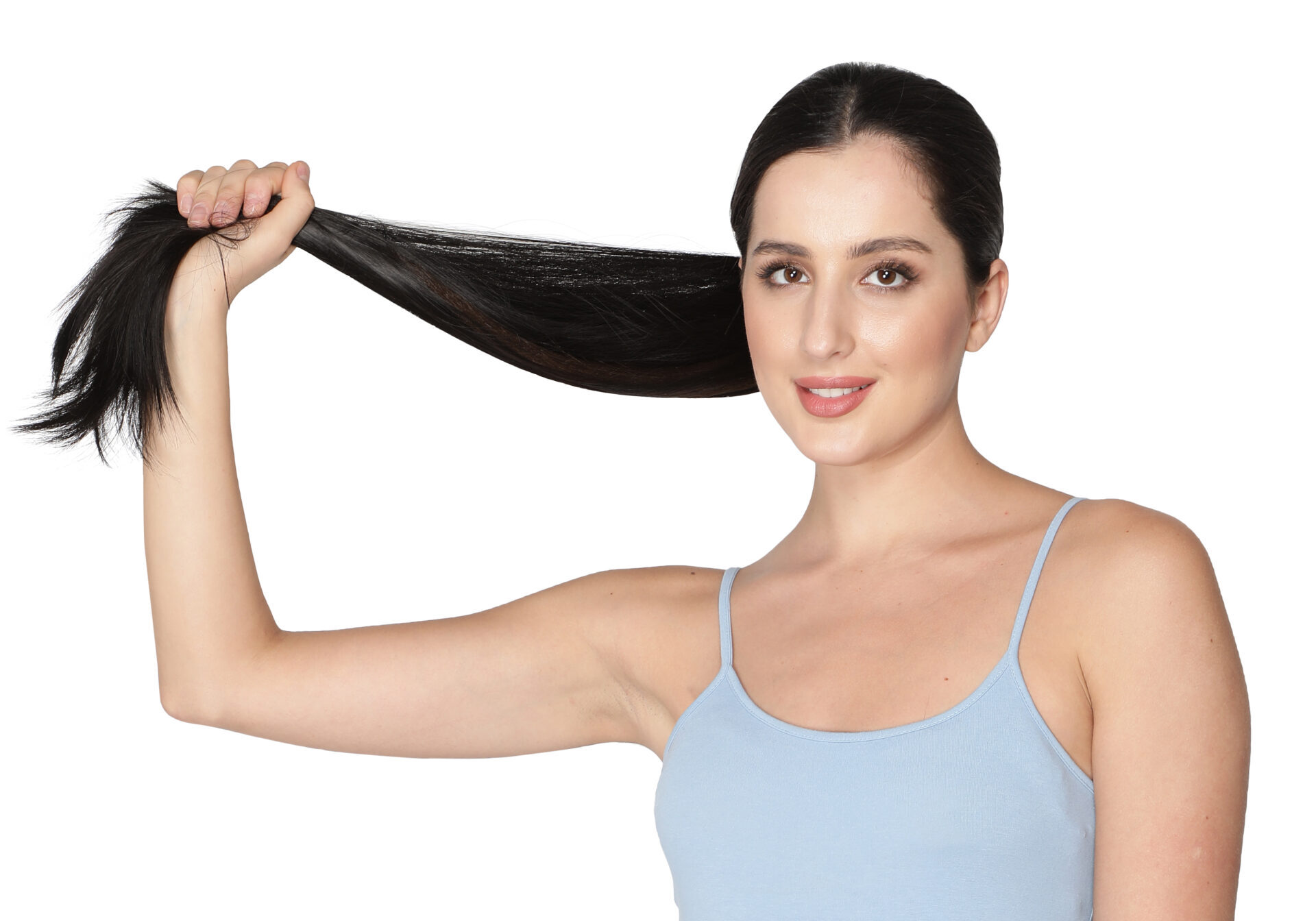
Generally, there are four types of hair extensions.
According to our research, tape-in, clip-in, bonded, and halo hair extensions. And while they all share one common goal—creating long, luxurious hairstyles—they’re all different in terms of application, texture, and longevity. Consider the following breakdown.
Tape-in hair extensions
A must-have for those with normal-to-thick hair textures, tape-in hair extensions create a cascading veil effect and are reusable up to three times. This application is convenient for those who need to touch up their hair color within that time frame as well, on tape-in hair extensions, which boast a removal and reapplication time of one to two hours. Wear time, on the other hand, is six to eight weeks.
Clip-in hair extensions
Clip-ins are super easy to use and can be applied at home in a few minutes. They can easily be removed at any time and are the least damaging. This is because they don’t call for the addition of chemicals or other harsh solutions to secure the faux hair. They can be worn once every 15 wears, and are versatile as they can work for a wide range of hair types.
Bonded hair extensions
Also known as keratin bond extensions, bonded hair extensions are flexible at the root. This is suitable for clients who regularly style their hair or wear low ponytails. Application time can take two to four hours and these hair extensions, ideal for fine hair types, can be worn for two to four months.
Halo hair extensions
These easy-to-style, invisible hair extensions are perfect for those who are super low-maintenance. One advantage of these wigs is that the single thread hair strands sewn onto a super-thin cloth strip row are secured by a barely visible thread that lies on the curve of the head. This is a convenient option for someone who is curious about extensions but not ready to commit to a more permanent application. Halo hair extensions, which can last three to five years, and take two to three hours to apply if the extensions are being fitted to the whole head.
Most expensive vs most affordable hair extensions
Pricing varies by hair extension type. Bonded hair extensions are easily the most expensive. Depends on the salon.
There is a lot we can achieve with this method. This is because keratin bonds are less visible and more customizable. From a full transformation, like adding length or volume, to filling in a shallow spot, keratin bonds are for everyone.
Meanwhile, halo hair extensions are the most affordable option. However, you can also find options that are a lot less expensive online.
It is a very easy piece to install yourself. We also recommend this method to those who want to pump up their look without having to go through all the trouble. It’s also suitable for first-time extension users or anyone on a budget.
How to care for your hair extensions
Like your own hair, hair extensions require proper care to ensure they last for as long as possible, and remain as healthy-looking as possible. A rule of thumb that applies to all types of hair extensions: Keep them dry after washing your hair (which shouldn’t happen as often if they’re not the removable kind) and always brush your ends first and work your way up from there to eliminate tugging and further breakage when detangling. And as is the case with natural hair, submerging your extensions in chlorine and salt water should be avoided.
It’s imperative to refrain from air-drying after getting your bonded or taped-in extensions wet. This may look like using a microfiber towel to blot your hair dry or using a blowdryer on low heat. Whatever you choose, it’s vital to keep your hair from getting wet.
If you skip this step, the bonds and tape may not last as long as they should.
As far as styling tools are concerned, applying them to the roots is a big no-no. Everything from the earlobe down is safe. It’s a pretty decent vantage point.
How are hair extensions made?
While clip-ins, wefts, and halos are either hand-tied or machine-made, human hair extensions are carefully sorted. Before being cut off one’s head, the hair must be cleaned. It’s then pulled back and put in a tight ponytail, before being cleanly cut at the nape. From there, the soon-to-be human hair extensions undergo a sterilization and color bathing process before being distributed.
An interesting note: Most human hair that is used for extensions comes from India and China. Even hair extensions that are labeled as hailing from Brazil may boast a small percentage that originated in China.
The practice of shaving hair and offering hair as a sacrifice is known as Tonsuring. The temple town of Tirupathi, in South India is the largest pilgrimage spot where thousands of devotees practice tonsure daily.
In India, the concept of the Hindus who practice this is that they are paying tribute to the God Lord Balaji for the blessings he may have bestowed upon them. It is their way of showing their gratitude. It also symbolizes one’s sacrifice of material beauty and false ego.
Donated hair becomes the property of the temple, which then sells these hairs to hair manufacturers for cosmetic purposes. The beauty industry uses hair for various types of hair pieces. Donated hair is largely used for hair extensions.
So, what type of hair extensions are suitable?
The appropriate hair extensions are based on what your goals are, as well as what you’re willing to deal with, upkeep wise. Objectively.


